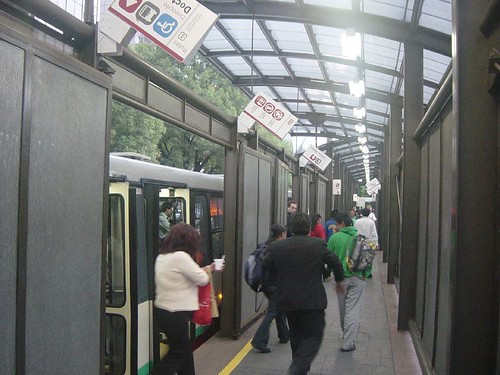 The prospects of funding Bus Rapid Transit (BRT) in the 'Global South' just improved!
The prospects of funding Bus Rapid Transit (BRT) in the 'Global South' just improved!According to Business News Americas (found via http://www.transportnews.org)
The TransMilenio public transport system in Colombian capital Bogotá has become the first mass transit system in the world to be considered a clean development mechanism (CDM) in accordance with the Kyoto Protocol, the Andean Development Corporation (CAF) stated in a press release.This means that it will be "be eligible for carbon emission reduction certificates (CERs), which can be traded with developed countries to help the latter reach the carbon emission reduction goals set out under the Kyoto Protocol".
The UN Framework Convention on Climate Change (UNFCCC) has approved CAF's methodology to consider the TransMilenio scheme as having a CDM component.
This means that it is officially accepted that the TransMilenio system reduces the emission of greenhouse gases because of its greater efficiency in transporting passengers and due to the partial substitution of private means of transport by high quality public services.
This answers a call made by Wright and Fulton in a paper that I reviewed last year. They argued that projects like Bogotá's BRT system, which involve mode shifts to inherently more efficient modes of transport, such as well-used public transport systems, are far more cost effective than efforts that focus on fuel technology. Their arguments focused especially on BRT as offering widespread opportunities.
It will be interesting to see if this sets a precedent that can be followed up on by many other similar projects.
The photos with this post are of Mexico City's BRT line, known as Metrobus.

